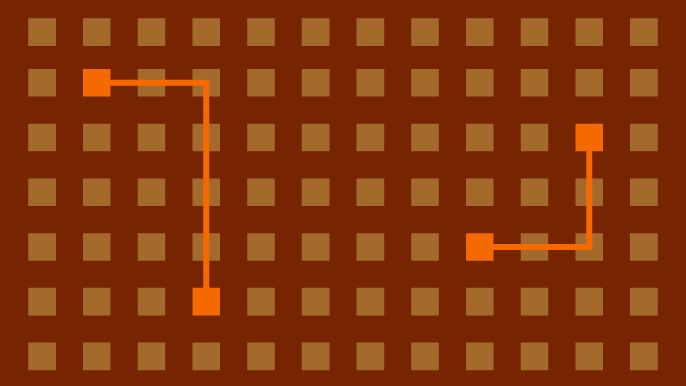
PowerShell Remoting Cheatsheet
I have become a big fan of PowerShell Remoting. I find my self using it for both penetration testing and standard management tasks. In this blog I’ll share a basic PowerShell Remoting cheatsheet so you can too.
Introduction to PowerShell Remoting
PowerShell Remoting is essentially a native Windows remote command execution feature that’s build on top of the Windows Remote Management (WinRM) protocol. Based on my super Google results, WinRM is supported by Windows Vista with Service Pack 1 or later, Windows 7, Windows Server 2008, and Windows Server 2012.
Enabling PowerShell Remoting
Before we get started let’s make sure PowerShell Remoting is all setup on your system.
1. In a PowerShell console running as administrator enable PowerShell Remoting.
Enable-PSRemoting –force
This should be enough, but if you have to troubleshoot you can use the commands below.
2. Make sure the WinRM service is setup to start automatically.
# Set start mode to automatic
Set-Service WinRM -StartMode Automatic
# Verify start mode and state - it should be running
Get-WmiObject -Class win32_service | Where-Object {$_.name -like "WinRM"}
3. Set all remote hosts to trusted. Note: You may want to unset this later.
# Trust all hosts Set-Item WSMan:localhost\client\trustedhosts -value * # Verify trusted hosts configuration Get-Item WSMan:localhost\client\trustedhosts
Executing Remote Commands with PowerShell Remoting
Now we can play around a little. There’s a great blog from a while back that provides a nice overview of PowerShell Remoting at https://blogs.technet.com/b/heyscriptingguy/archive/2009/10/29/hey-scripting-guy-october-29-2009.aspx. It’s definitely on my recommended reading list, but I’ll expand on the examples a little.
Executing a Single Command on a Remote System
The “Invoke-Command” command can be used to run commands on remote systems. It can run as the current user or using alternative credentials from a non domain system. Examples below.
Invoke-Command –ComputerName MyServer1 -ScriptBlock {Hostname}
Invoke-Command –ComputerName MyServer1 -Credential demo\serveradmin -ScriptBlock {Hostname}
If the ActiveDirectory PowerShell module is installed it’s possible to execute commands on many systems very quickly using the pipeline. Below is a basic example.
Get-ADComputer -Filter * -properties name | select @{Name="computername";Expression={$_."name"}} | Invoke-Command -ScriptBlock {hostname}
Sometimes it’s nice to run scripts stored locally on your system against remote systems. Below are a few basic examples.
Invoke-Command -ComputerName MyServer1 -FilePath C:\pentest\Invoke-Mimikatz.ps1 Invoke-Command -ComputerName MyServer1 -FilePath C:\pentest\Invoke-Mimikatz.ps1 -Credential demo\serveradmin
Also, if your dynamically generating commands or functions being passed to remote systems you can use invoke-expression through invoke-command as shown below.
$MyCommand = "hostname"
$MyFunction = "function evil {write-host `"Getting evil...`";iex -command $MyCommand};evil"
invoke-command -ComputerName MyServer1 -Credential demo\serveradmin -ScriptBlock {Invoke-Expression -Command "$args"} -ArgumentList $MyFunction
Establishing an Interactive PowerShell Console on a Remote System
An interactive PowerShell console can be obtained on a remote system using the “Enter-PsSession” command. It feels a little like SSH. Similar to “Invoke-Command”, “Enter-PsSession” can be run as the current user or using alternative credentials from a non domain system. Examples below.
Enter-PsSession –ComputerName server1.domain.com Enter-PsSession –ComputerName server1.domain.com –Credentials domainserveradmin
If you want out of the PowerShell session the “Exit-PsSession” command can be used.
Exit-PsSession
Creating Background Sessions
There is another cool feature of PowerShell Remoting that allows users to create background sessions using the “New-PsSession” command. Background sessions can come in handy if you want to execute multiple commands against many systems. Similar to the other commands, the “New-PsSession” command can run as the current user or using alternative credentials from a non domain system. Examples below.
New-PSSession -ComputerName server1.domain.com New-PSSession –ComputerName server1.domain.com –Credentials domainserveradmin
If the ActiveDirectory PowerShell module is installed it’s possible to create background sessions for many systems at a time (However, this can be done in many ways). Below is a command example showing how to create background sessions for all of the domain systems. The example shows how to do this from a non domain system using alternative domain credentials.
New-PSDrive -PSProvider ActiveDirectory -Name RemoteADS -Root "" -Server a.b.c.d -credential domain\user
cd RemoteADS:
Get-ADComputer -Filter * -Properties name | select @{Name="ComputerName";Expression={$_."name"}} | New-PSSession
Listing Background Sessions
Once a few sessions have been established the “Get-PsSession” command can be used to view them.
Get-PSSession
Interacting with Background Sessions
The first time I used this feature I felt like I was working with Metasploit sessions, but these sessions are a little more stable. Below is an example showing how to interact with an active session using the session id.
Enter-PsSession –id 3
To exit the session use the “Exit-PsSession” command. This will send the session into the background again.
Exit-PsSession
Executing Commands through Background Sessions
If your goal is to execute a command on all active sessions the “Invoke-Command” and “Get-PsSession” commands can be used together. Below is an example.
Invoke-Command -Session (Get-PSSession) -ScriptBlock {Hostname}
Removing Background Sessions
Finally, to remove all of your active sessions the “Disconnect-PsSession” command can be used as shown below.
Get-PSSession | Disconnect-PSSession
Wrap Up
Naturally PowerShell Remoting offers a lot of options for both administrators and penetration testers. Regardless of your use case I think it boils down to this:
- Use “Invoke-Command” if you’re only going to run one command against a system
- Use “Enter-PSSession” if you want to interact with a single system
- Use PowerShell sessions when you’re going to run multiple commands on multiple systems
Hopefully this cheatsheet will be useful. Have fun and hack responsibly.
References
Explore more blog posts

Practical Methods for Decapping Chips
Discover the intricate process of chip decapping, exposing secrets stored within snuggly layers of industrial epoxy, sleeping in beds of silicon.

Hijacking Azure Machine Learning Notebooks (via Storage Accounts)
Abusing Storage Account Permissions to attack Azure Machine Learning notebooks

Celebrating NetSPI’s Partners of the Year 2024
Congratulations to NetSPI’s 2024 Partner of the Year Recipients Defy Security, VLCM, Softcat, Enduir, Evotek, and AWS